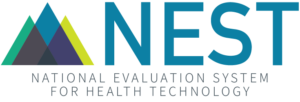December 3, 2020
On October 15th, leaders across the medical device ecosystem, including FDA, industry, payers, and patients, joined NESTcc to discuss emerging issues related to unique device identifiers (UDIs) at our inaugural NEST Collaborative Community virtual event. The NEST Collaborative Community provides a forum for stakeholders to work proactively to improve the speed of innovation and enhance the safety and effectiveness of medical devices and health technology.
UDIs were selected as the initial focus of the Collaborative Community due to their broad relevance across the medical device ecosystem, the importance of related policy decisions to multiple stakeholders, and the urgent need for cooperative engagement.
Below are key takeaways from the discussion:
Unique Device Identifiers have the potential to streamline evidence generation for medical devices.
In 2013, the FDA established the Unique Device Identification System to adequately identify medical devices sold in the United States as they move from manufacturers to distribution to patient use. The UDI Final Rule requires each medical device to contain a distinct code on its label, packaging, and sometimes on the device itself. UDIs, therefore, present an enormous opportunity to enhance our ability to generate high-quality, real-world evidence for regulated medical devices, including post-market evaluations of safety and effectiveness.
Dr. Sanket Dhruva, Assistant Professor of Medicine at UCSF School of Medicine, opened the session with an introduction to UDI implementation and the research teams working to understand its potential. Dr. Dhruva noted, “Prior research, led by Dr. Joseph Drozda and Dr. Natalia Wilson, examined the availability of the UDI and found that UDIs are not routinely collected in existing electronic health records, or other ancillary data, for most health systems… This means that there is a massive, relatively unfulfilled opportunity for evidence generation about medical devices using UDI if we can integrate it into our electronic data sources.”
The NEST Collaborative Community is committed to leveraging its network to benefit stakeholders across the medical device ecosystem.
In September 2019, the NEST Coordinating Center became a Collaborative Community with FDA participation. Now, NESTcc is taking on the challenge of understanding the uptake of UDIs by health systems, the barriers and facilitators to implementation, and the role of innovation in interoperability. Dr. April Young, NEST Collaborative Community Coordinator, explained that NESTcc is “uniquely positioned to contribute to UDI discussions because of our commitment to a multi-stakeholder approach.”
Expert panelists from across the medical device ecosystem discussed emerging issues in UDI implementation and how their organizations are working to solve them.
 When asked about key issues in UDI adoption, Ms. Erin Quencer, Regulatory Health Scientist at FDA’s CDRH explained, “Fully realizing the benefits of the UDI system depends on UDI being integrated into data sources throughout our healthcare system. This, however, requires UDI data to be of high quality, such that all stakeholders in the healthcare community have sufficient confidence in the accuracy and completeness of the data.” Ms. Quencer concluded that “FDA continues to work with labelers on the implementation of UDI requirements, and we are working on both policy and technical items to help ensure the quality and utility of UDI data. We believe it’s important to continue focusing our resources on addressing implementation issues and data quality, especially for higher-risk devices.”
When asked about key issues in UDI adoption, Ms. Erin Quencer, Regulatory Health Scientist at FDA’s CDRH explained, “Fully realizing the benefits of the UDI system depends on UDI being integrated into data sources throughout our healthcare system. This, however, requires UDI data to be of high quality, such that all stakeholders in the healthcare community have sufficient confidence in the accuracy and completeness of the data.” Ms. Quencer concluded that “FDA continues to work with labelers on the implementation of UDI requirements, and we are working on both policy and technical items to help ensure the quality and utility of UDI data. We believe it’s important to continue focusing our resources on addressing implementation issues and data quality, especially for higher-risk devices.”
 Mr. Rich Kucera, CEO and Co-founder of Symmetric Health Solutions, discussed the value UDI brings to the supply chain in his remarks. He noted, “Everywhere from rural community health systems to large multistate integrated delivery networks (IDNs) are really looking at UDI right now as a global source of truth as it pertains to the supplies that they procure throughout the supply chain into clinical operations.”
Mr. Rich Kucera, CEO and Co-founder of Symmetric Health Solutions, discussed the value UDI brings to the supply chain in his remarks. He noted, “Everywhere from rural community health systems to large multistate integrated delivery networks (IDNs) are really looking at UDI right now as a global source of truth as it pertains to the supplies that they procure throughout the supply chain into clinical operations.”
 When asked about the role that provider organizations can play in increasing consistent adoption of UDI with suppliers, Mr. Dennis Black, Program Director at Becton, Dickinson & Company, answered, “I think that it’s important for healthcare providers to commit to using the unique device identification information that we have. Some of the participants on this call are effectively using UDI and have a vision of how they’d like to use it going forward. I think we really need to see more of that. I think it’s really going to require a committed use of UDI on the part of the healthcare providers for us to really get value from this.”
When asked about the role that provider organizations can play in increasing consistent adoption of UDI with suppliers, Mr. Dennis Black, Program Director at Becton, Dickinson & Company, answered, “I think that it’s important for healthcare providers to commit to using the unique device identification information that we have. Some of the participants on this call are effectively using UDI and have a vision of how they’d like to use it going forward. I think we really need to see more of that. I think it’s really going to require a committed use of UDI on the part of the healthcare providers for us to really get value from this.”
 Mr. Mike Schiller, Senior Director of Supply Chain for the American Hospital Association (AHA), offered several key points from the supply chain perspective. He discussed the way the COVID-19 pandemic amplified the potential benefit of UDI implementation. “Additional emergency emerging issues have come about as a result of COVID-19,” said Schiller. ”Those would be lack of transparency, utilization, data analytics, and the ability to effectively and efficiently identify recalls, patients affected by the products, as well as the products and their locations. If you look at each one of those emerging issues, UDI is a common denominator to moving each of these forward and achieving the results that we hope to achieve in transparency, utilization data, and efficient recall processes.”
Mr. Mike Schiller, Senior Director of Supply Chain for the American Hospital Association (AHA), offered several key points from the supply chain perspective. He discussed the way the COVID-19 pandemic amplified the potential benefit of UDI implementation. “Additional emergency emerging issues have come about as a result of COVID-19,” said Schiller. ”Those would be lack of transparency, utilization, data analytics, and the ability to effectively and efficiently identify recalls, patients affected by the products, as well as the products and their locations. If you look at each one of those emerging issues, UDI is a common denominator to moving each of these forward and achieving the results that we hope to achieve in transparency, utilization data, and efficient recall processes.”
 Mr. Chris Muir, Director, Standards Division at the Office of the National Coordinator for Health Information Technology (ONC), discussed the importance of UDI for clinicians to be fully informed while making decisions about their patients’ healthcare. “The bottom line is that the UDI inclusion and certification is aimed at delivering information to clinicians so that they can know what devices their patients have implanted, whether or not those devices are active, and are able to use that information to deliver safer, more effective care.”
Mr. Chris Muir, Director, Standards Division at the Office of the National Coordinator for Health Information Technology (ONC), discussed the importance of UDI for clinicians to be fully informed while making decisions about their patients’ healthcare. “The bottom line is that the UDI inclusion and certification is aimed at delivering information to clinicians so that they can know what devices their patients have implanted, whether or not those devices are active, and are able to use that information to deliver safer, more effective care.”
Accessible UDI data will allow patients to play an active role in their own care.
 Dr. Angie Botto–van Bemden, President and CEO of Musculoskeletal Research International, highlighted the way UDI data can encourage patients to take part in the conversation on UDI implementation. “The opportunity here is huge for the longitudinal data that could be collected. Real-world data that could be applied for real-world evidence, post–market surveillance, and active surveillance… This would be ideal because the product lifecycle needs to be aligned with the patient lifecycle. I think there’s a great opportunity to make sure there’s a patient partnership here and the patient voice is heard.”
Dr. Angie Botto–van Bemden, President and CEO of Musculoskeletal Research International, highlighted the way UDI data can encourage patients to take part in the conversation on UDI implementation. “The opportunity here is huge for the longitudinal data that could be collected. Real-world data that could be applied for real-world evidence, post–market surveillance, and active surveillance… This would be ideal because the product lifecycle needs to be aligned with the patient lifecycle. I think there’s a great opportunity to make sure there’s a patient partnership here and the patient voice is heard.”
 Dr. Richard Embrey, Medical Director at Blue Cross and Blue Shield of Alabama, echoed the importance of patient partnership from an insurance perspective. “I think that the entire system is pushing towards transparency for patients,” said Embrey. “As an insurance carrier, Blue Cross encourages this. We know that members who are engaged in their own care have much better outcomes. I think UDI could be part of this by allowing members to have access to the absolute highest level of information regarding their care.”
Dr. Richard Embrey, Medical Director at Blue Cross and Blue Shield of Alabama, echoed the importance of patient partnership from an insurance perspective. “I think that the entire system is pushing towards transparency for patients,” said Embrey. “As an insurance carrier, Blue Cross encourages this. We know that members who are engaged in their own care have much better outcomes. I think UDI could be part of this by allowing members to have access to the absolute highest level of information regarding their care.”
 Mr. Hugo Campos, Participant Ambassador for the National Institute of Health’s All of Us Research Program, offered his perspective as an advocate for patient autonomy, accountability, and access to health data. “It’s about patient engagement and making sure that people realize the value of UDI, why they should care, and why it matters to them,” said Campos. “Several other panelists have mentioned transparency, and it’s particularly important to me in the sense that it creates an opportunity for us to increase transparency and reestablish some of the trust that’s been lost over the years. UDI will enable better ways for us to stay in touch with patients by informing them of advisories and recalls, and so it’s a real opportunity and a really important step there.”
Mr. Hugo Campos, Participant Ambassador for the National Institute of Health’s All of Us Research Program, offered his perspective as an advocate for patient autonomy, accountability, and access to health data. “It’s about patient engagement and making sure that people realize the value of UDI, why they should care, and why it matters to them,” said Campos. “Several other panelists have mentioned transparency, and it’s particularly important to me in the sense that it creates an opportunity for us to increase transparency and reestablish some of the trust that’s been lost over the years. UDI will enable better ways for us to stay in touch with patients by informing them of advisories and recalls, and so it’s a real opportunity and a really important step there.”
The NEST Collaborative Community event presented the latest insights and perspectives on emerging issues related to the adoption and implementation of UDIs. We had the chance to hear from manufacturers, supply chain leaders, regulators, payers, clinicians, patients, and researchers, all of whom are concerned with enabling access to safe medical devices, better clinical decision-making, and improved care and patient outcomes.
We are grateful to the medical device ecosystem leaders who joined us and we look forward to continued collaboration on these important issues.
View the recording of this event.
The NEST Collaborative Community is comprised of representatives from across the medical device ecosystem working together to develop thought leadership and coalesce diverse stakeholders to further innovation and understanding on initiatives of importance. Stay up to date on the NEST Collaborative Community by becoming a member.



